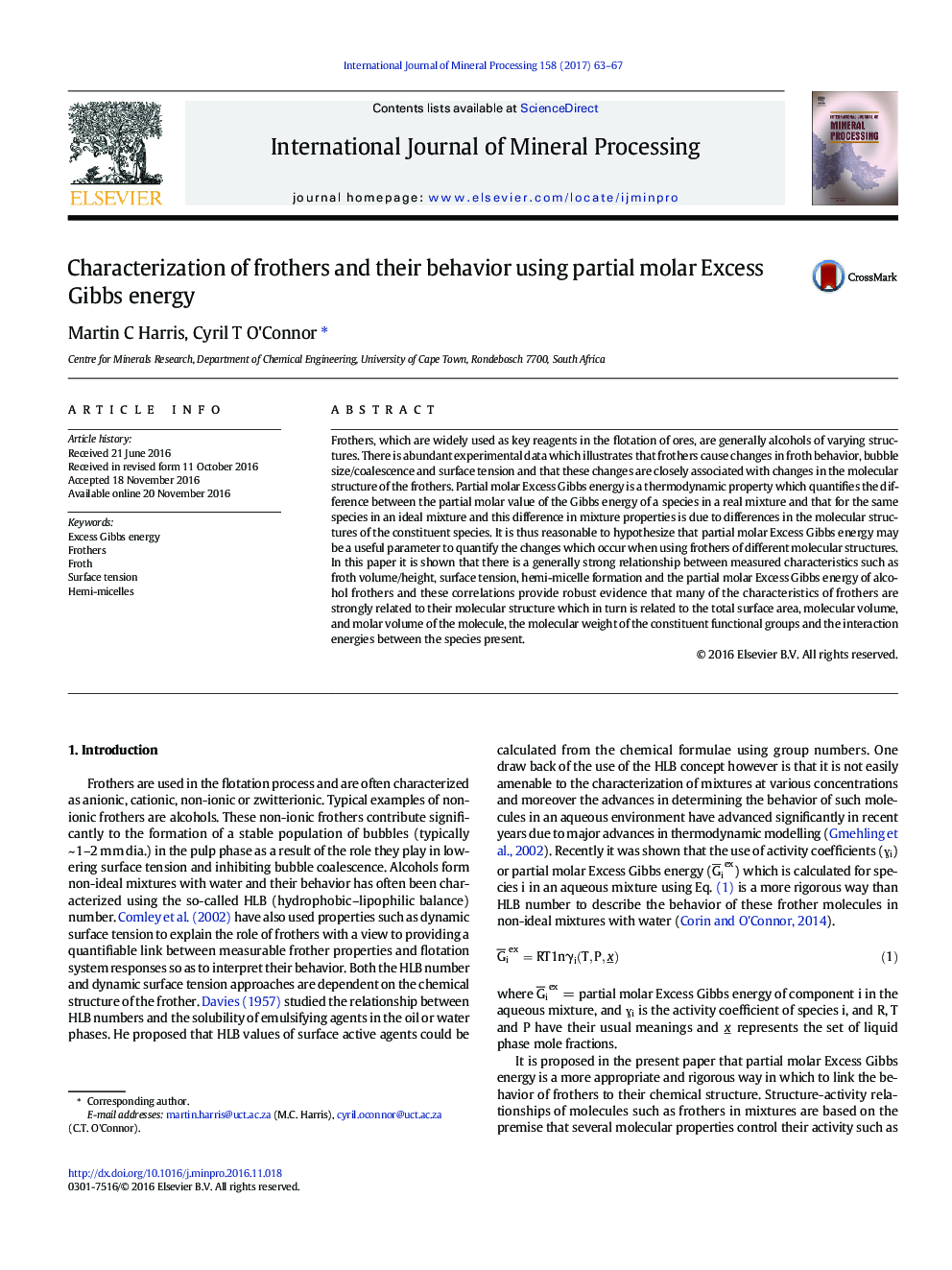| Article ID | Journal | Published Year | Pages | File Type |
|---|---|---|---|---|
| 4769226 | International Journal of Mineral Processing | 2017 | 5 Pages |
â¢Excess Gibbs energy indicates the deviation of a mixture from ideal behavior.â¢There is a linear relationship between froth/foam heights and excess Gibbs energy.â¢There is a generic relationship between surface tension and Excess Gibbs energy.â¢There is a relationship between hemicelle behavior and Excess Gibbs energy.
Frothers, which are widely used as key reagents in the flotation of ores, are generally alcohols of varying structures. There is abundant experimental data which illustrates that frothers cause changes in froth behavior, bubble size/coalescence and surface tension and that these changes are closely associated with changes in the molecular structure of the frothers. Partial molar Excess Gibbs energy is a thermodynamic property which quantifies the difference between the partial molar value of the Gibbs energy of a species in a real mixture and that for the same species in an ideal mixture and this difference in mixture properties is due to differences in the molecular structures of the constituent species. It is thus reasonable to hypothesize that partial molar Excess Gibbs energy may be a useful parameter to quantify the changes which occur when using frothers of different molecular structures. In this paper it is shown that there is a generally strong relationship between measured characteristics such as froth volume/height, surface tension, hemi-micelle formation and the partial molar Excess Gibbs energy of alcohol frothers and these correlations provide robust evidence that many of the characteristics of frothers are strongly related to their molecular structure which in turn is related to the total surface area, molecular volume, and molar volume of the molecule, the molecular weight of the constituent functional groups and the interaction energies between the species present.
